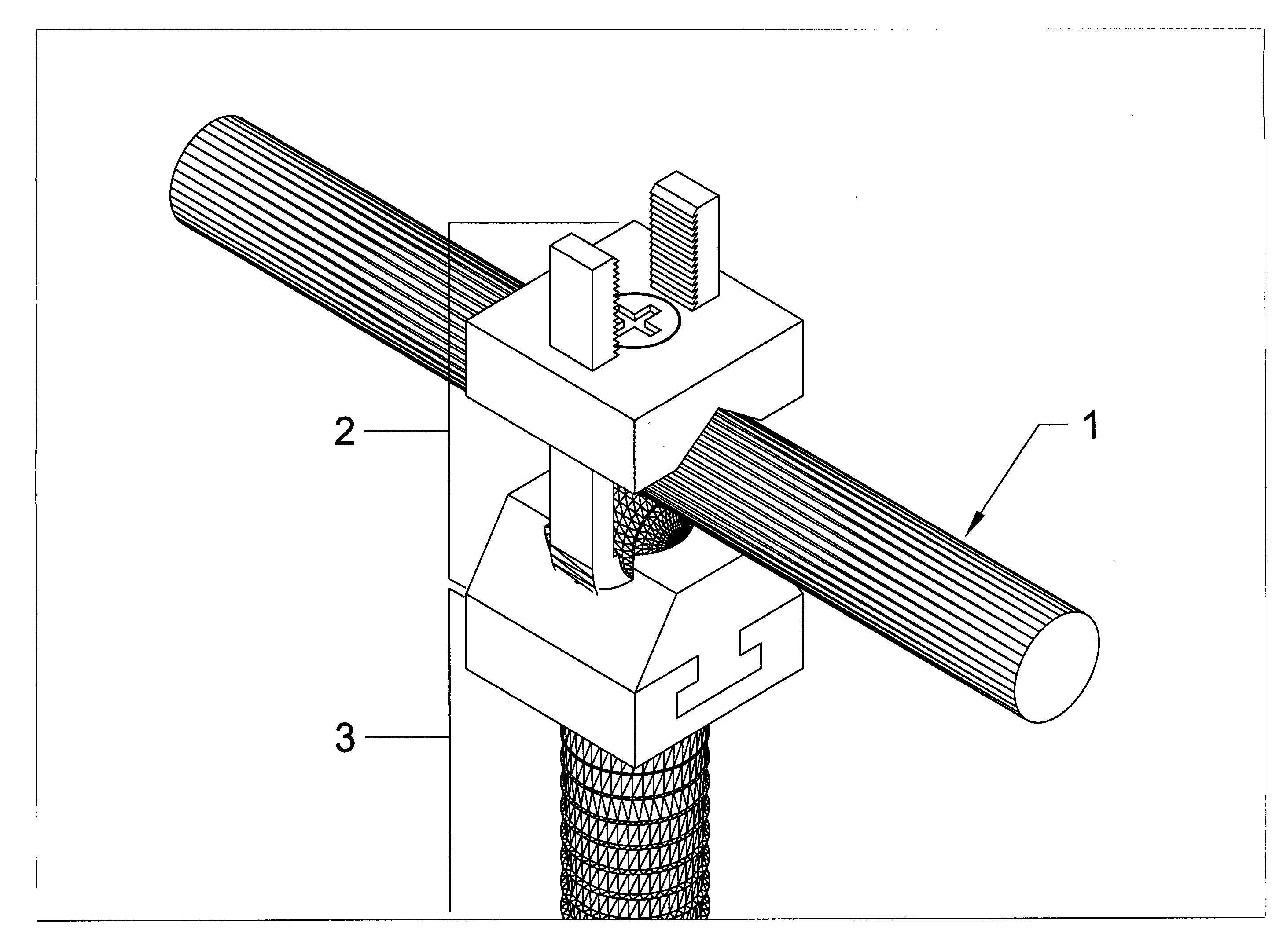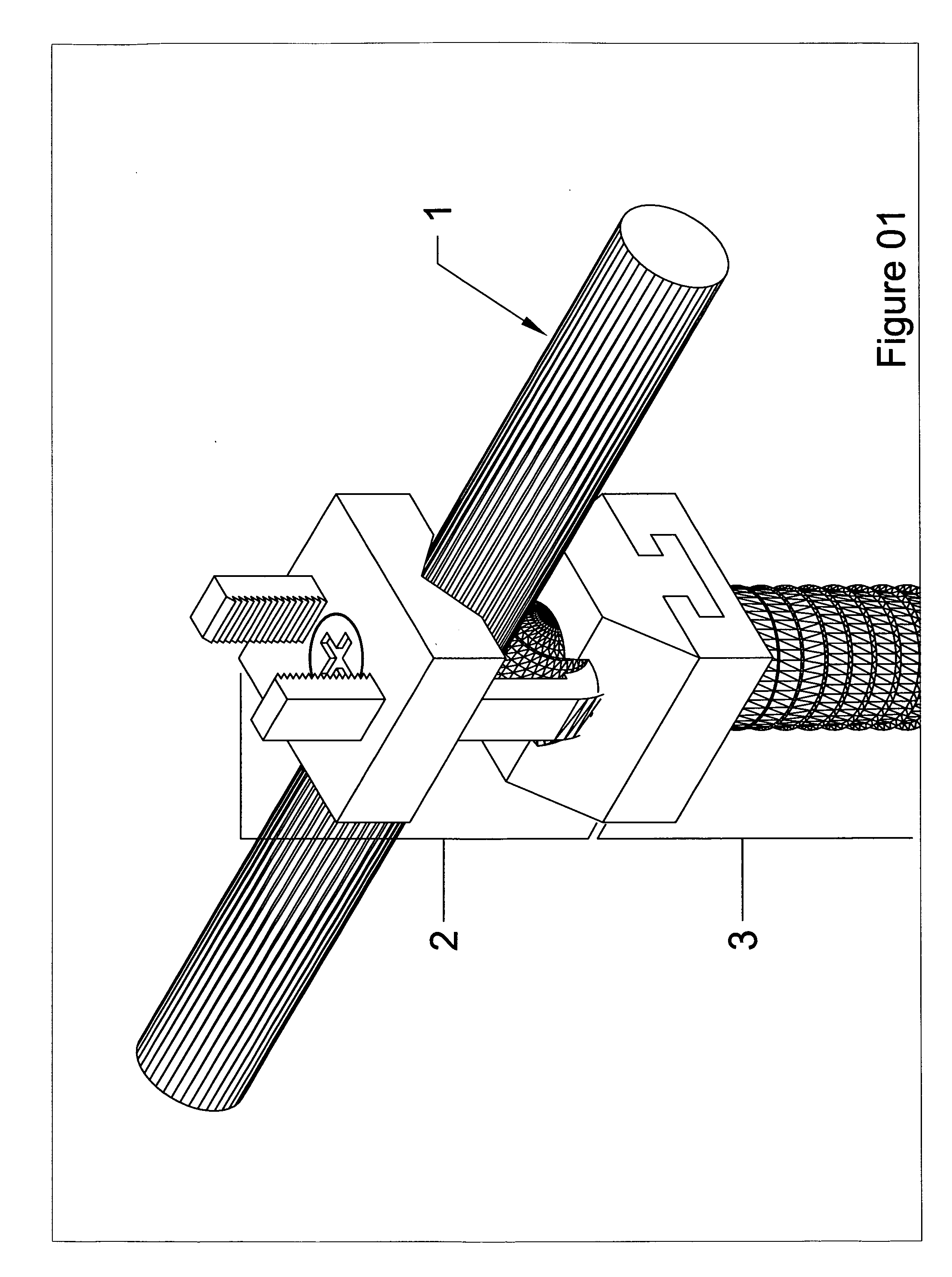Tension fixation system
a technology of fixation system and tension, which is applied in the field of spinal disorders, can solve the problems of loss of mechanical integrity of the spine, deformation, neurological injury, etc., and achieve the effects of improving patient care, reducing spine deformation, and improving us
- Summary
- Abstract
- Description
- Claims
- Application Information
AI Technical Summary
Benefits of technology
Problems solved by technology
Method used
Image
Examples
Embodiment Construction
[0029]The present invention provides an apparatus and method for fixation of a bone anchor to the structural member of a spine fixation system whereby the spine is provided mechanical stability and correction of deformity through load carried fully or partially through the structural member. This invention provides fixation of a bone anchor to a structural member through tensile loading of a component of the fixation mechanism. This invention is widely adaptable to a variety of bone anchors and structural members. This invention allows reduction of spine deformity resulting from varied spinal disease through the fixation mechanism alone without the need for added reduction instrumentation systems. This invention equally provides a fixation mechanism for fixation of a bone anchor to the structural member of a spine fixation system in the absence of deformity.
[0030]In a general sense, the invention provides an apparatus for fixation of a bone anchor of a spinal fixation system to a su...
PUM
 Login to View More
Login to View More Abstract
Description
Claims
Application Information
 Login to View More
Login to View More - R&D
- Intellectual Property
- Life Sciences
- Materials
- Tech Scout
- Unparalleled Data Quality
- Higher Quality Content
- 60% Fewer Hallucinations
Browse by: Latest US Patents, China's latest patents, Technical Efficacy Thesaurus, Application Domain, Technology Topic, Popular Technical Reports.
© 2025 PatSnap. All rights reserved.Legal|Privacy policy|Modern Slavery Act Transparency Statement|Sitemap|About US| Contact US: help@patsnap.com



